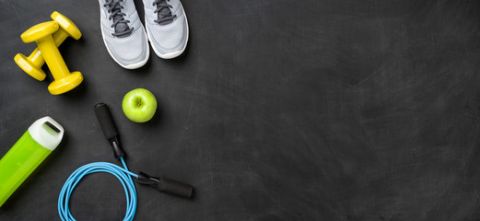Sport may not be for all – but healthy, active lifestyles can be

‘Sport’ has a high profile in many schools. It is a word that the sector is comfortable with, and sits unobtrusively in the title of this magazine. The word is defined as ‘competitive athletic endeavour, usually requiring skill or athleticism’. Thus, by definition, it excludes people who don’t have either skill or athleticism. It also ignores the science that explains that approximately 25% of the population are stressed by competition, perform worse in those circumstances and avoid the condition. Is it coincidence that this is about the proportion pupils that many schools identify as ‘hard to reach’? It explains why sport was never, and can never be, for all. The then Sports Council of the 1970s was misguided.
When sport and exercise professionals in schools are asked to list their success criteria for pupil outcomes, lifelong participation in exercise is rarely omitted. Despite this, programmes remain dominated by teams and fixtures, and publicity obsessed with results and scores. For the skilful, competitive athletes, this can be an amazing experience. However, it is hard to find the activity content which is designed to achieve positive engagement with exercise amongst those who don’t share this motivation.
The arms race of indoor facility development has had an influence on the character of PE programmes. Indoor games have become a significant feature of the curriculum, despite the fact that Basketball, Volleyball and Badminton have a high skill threshold and low rates of adult engagement. ‘Induction’ into using conditioning equipment, designed for performance athletes, is rarely accompanied by an understanding of health benefits. Learning about active lifestyles often has a lower profile than understanding ‘training’.
The early 1980s gave birth to a new concept in PE: ‘Health Related Fitness’. The title remains largely untouched by the passage of time, but the concept hasn’t kept up. Sports science was in its infancy, and the true impact of adolescent inactivity was not as well understood. However, these programmes are little changed from that era, still dominated by components of fitness, training methods, measuring and testing. Informative content, but uninspiring and irrelevant to those children who would benefit most from improving their levels of movement. HRF has usually prioritised the Fitness ahead of the Health. The topic hasn’t moved on much in 40 years.
School sports provision is unrecognisable from the 1980s. Coaching science has produced an army of highly qualified specialists who drive performance standards ever upwards. Many are now employed in schools, for whom sports results are part of the organisation’s identity and business case. Resources to support athletic performance are frequently amazing. The experience of able and dedicated athletes is better than at any previous time in history. But they will always be a minority.
During the same period, average adolescent fitness levels have slumped and obesity has become an epidemic. Despite record spending on sport by schools, the physical capacities of many pupils are a fraction of those of previous eras. The Centre for Sports and Exercise Science at Essex University has robust data that charts alarming declines in teenage fitness levels. The theoretical aim of producing school leavers with a positive lifetime engagement with exercise enjoys very moderate success. A focus on Strength and Conditioning may
serve the interests of aspiring athletes, but neither of those words has great appeal to the majority.
Little progress has been made with the least enthusiastic quartile of the pupil population. Dr Gavin Sandercock, of Essex University, identifies that the biggest health and fitness gains would be achieved by making ‘the least fit a bit fitter’ and ‘the least active a bit more active’. But these are rarely priorities for schools. There is nothing exciting about it, the impact is only visible in the long term and there are no results to post on websites.
Many Physical Education programmes have lost their way. Much of the content is dominated by indoor sports in which the games playing athletes thrive, as they always did. The least athletically-inclined have another opportunity to define themselves as ‘not sporty’, and the intergenerational cycle continues. Research is quite clear that inactive children are many times more likely to become sedentary adults. Therefore, the real priority should be to teach the benefits of healthy active lifestyles, and the ways in which these can be achieved. To embed movement into everyday life from teenage years onwards. The language is part of this: ‘training’, ‘fitness’, ‘conditioning’ and ‘testing’ are from the lexicon of high performance. It is the nomenclature of disengagement. ‘Cross Country’ has a century of negative baggage: there is no school in the country where it is welcomed by pupils. It teaches many to hate and avoid running, and only a small proportion are re-engaged by Parkrun as adults. Schools have a poor record of teaching the love of running.
PE of the future must have a focus on active wellbeing. From a foundation of physical and aquatic literacy, learning the value and enjoyment of movement should be a social and educational priority. New and creative teaching methods and curricula will be required. Sport will continue to engage many boys and girls, but it will never be all. Sport may not be for all, but exercise and health can be.
Neil Rollings is Managing Director of ICE Education, producers of the innovative MOVE60 curriculum